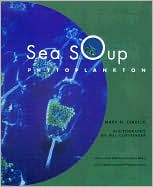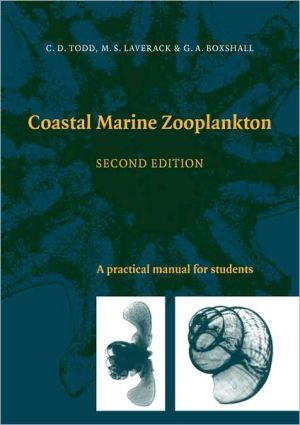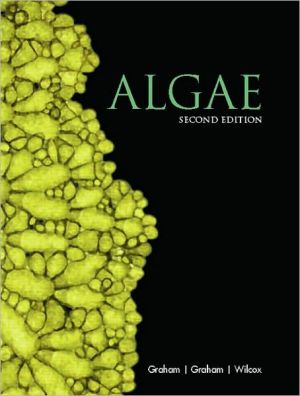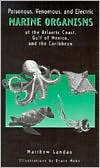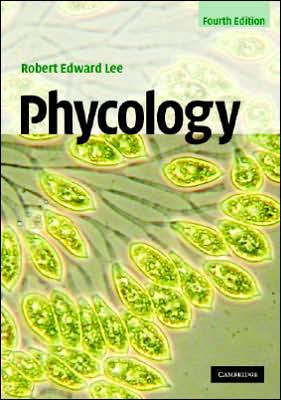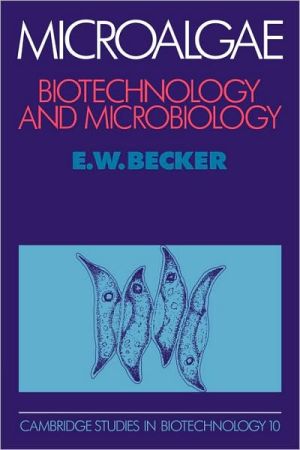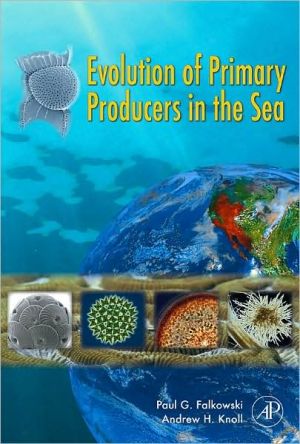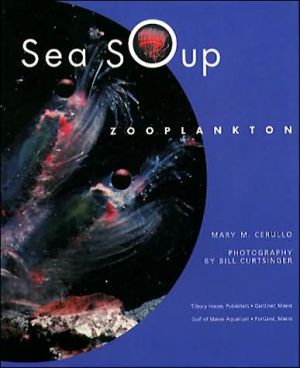Sea Soup: Phytoplankton
In a mere teaspoon of sea water, more than 1 million phytoplankton can live! Some are deadly, some are helpful. But these tiny creatures come in thousands of variations and help make up the most basic life of the oceans. Color photography illustrates the diversity of these microscopic animals.\ \ Discusses the microscopic organisms known as phytoplankton and the important functions they serve in replenishing earth's atmosphere, in the marine food chain, and more.\
Search in google:
In a mere teaspoon of sea water, more than 1 million phytoplankton can live! Some are deadly, some are helpful. But these tiny creatures come in thousands of variations and help make up the most basic life of the oceans. Color photography illustrates the diversity of these microscopic animals. Children's Literature If writer-scientist Mary Cerullo ever needs a PR team, I want to be head cheerleader. This woman knows her science and writes well for young people--extremely well, in fact. Could you read this chapter head and fail to plunge in? "How many Phytoplankton does it take to fill a Humpback Whale?" Or this one--"Why is the Ocean Blue?" And did you know that one lone phytoplankton is called a phytoplankter? Understanding this microscopic life form is the key to marine science because, "directly or indirectly, phytoplankton feed everything else in the ocean." This outstanding book describes, among other topics, how the oceans' food chains work, algal blooms (e.g., the infamous "red tide"), and bioluminescence, which Cerullo calls "underwater fireworks." She explains how the oil and natural gas beneath our seas result from decayed phytoplankton, changed over millions of years into our critical fossil fuels. One of Cerullo's many gifts is taking facts that could easily be meaningless numbers and transforming them into concepts we can understand. For example, "One teaspoon of sea water can hold a million phytoplankton." Even more impressive--"About half of the world's oxygen comes from phytoplankton. That means every other breath you take is thanks to phytoplankton." Wow. With its dynamite photography and text, all readers will be drawn to this book. NOTE--Sea Soup can be accompanied by Sea Soup Teacher's Guide--Discovering the Watery World of Phytoplankton and Zooplankton, by Betsy T. Stevens, with illustrations by Rosemary Giebfried. As a teacher myself, I'd want this guide. It is overflowing with excellent ideas for experiments and further information on all the topics in Cerullo's text. It hasa card game and Food Web Cards. At 128 pages, with suggestions for further reading, lists of maritime organizations and web sites, this guide ranks right at the top. 1999, Tilbury House, Ages 8 to 12, $16.95. Reviewer: Joan Carris —Children's Literature
\ Children's Literature\ - Children's Literature\ If writer-scientist Mary Cerullo ever needs a PR team, I want to be head cheerleader. This woman knows her science and writes well for young people--extremely well, in fact. Could you read this chapter head and fail to plunge in? "How many Phytoplankton does it take to fill a Humpback Whale?" Or this one--"Why is the Ocean Blue?" And did you know that one lone phytoplankton is called a phytoplankter? Understanding this microscopic life form is the key to marine science because, "directly or indirectly, phytoplankton feed everything else in the ocean." This outstanding book describes, among other topics, how the oceans' food chains work, algal blooms (e.g., the infamous "red tide"), and bioluminescence, which Cerullo calls "underwater fireworks." She explains how the oil and natural gas beneath our seas result from decayed phytoplankton, changed over millions of years into our critical fossil fuels. One of Cerullo's many gifts is taking facts that could easily be meaningless numbers and transforming them into concepts we can understand. For example, "One teaspoon of sea water can hold a million phytoplankton." Even more impressive--"About half of the world's oxygen comes from phytoplankton. That means every other breath you take is thanks to phytoplankton." Wow. With its dynamite photography and text, all readers will be drawn to this book. NOTE--Sea Soup can be accompanied by Sea Soup Teacher's Guide--Discovering the Watery World of Phytoplankton and Zooplankton, by Betsy T. Stevens, with illustrations by Rosemary Giebfried. As a teacher myself, I'd want this guide. It is overflowing with excellent ideas for experiments and further information on all the topics in Cerullo's text. It hasa card game and Food Web Cards. At 128 pages, with suggestions for further reading, lists of maritime organizations and web sites, this guide ranks right at the top. 1999, Tilbury House, Ages 8 to 12, $16.95. Reviewer: Joan Carris —Children's Literature\ \ \ \ \ School Library JournalGr 5-8-Outstanding full-color photo-microscopy dominates this slim volume on the microscopic plants at the bottom of the ocean food chain. The clearly presented information is not available in another single volume for this audience. However, the organization is somewhat disjointed. The main questions are superimposed on photographs covering double-page spreads. The answers are provided in dense print and illustrated with small photographs on the next spread. The language is scientific, and while terms such as "zooxanthellaes" and "dinoflagellates" are defined in context, the text can be challenging to students unfamiliar with marine biology. Created in conjunction with the Gulf of Maine Aquarium, this book covers career information and encourages young people to explore the research concerns of the future. A teacher's guide explores how this book can be utilized with the National Science Education Standards. Many related facts are offered for curious readers, such as the inclusion of information on the phenomenon known as a red tide.-Nora Jane Natke, Hooked on Books, Hollywood, FL Copyright 2000 Cahners Business Information.\|\ \ \ From The CriticsSingle-celled planktonic algae living in the upper reaches of the ocean form the important basis for higher forms of life in the sea. This is a crucially important idea to grasp, but to capture kids' attention, these tiny cells must compete with the immediate interest engendered by sleek marine mammals, ferocious sharks, and exotic fish.\ What can a marine educator do to turn children's attention toward the really important, but often inaccessible, concepts of science? Mary Cerullo, who has spent a productive career developing ways to bring marine science to students, brings it all together in Sea Soup, in which the phytoplanktons take stage front with exquisite photographs and engaging text. Using well-chosen metaphors and eye-catching color to portray the importance of the role of single-celled organisms you can't see without a microscope, she brings honest science to kids.\ Ideally, the book should be used with its companion teacher's guide by Betsy T. Stevens (reviewed separately), but it stands alone as a wonderful resource for younger children.\ A brief glossary and a list of related readings round out the volume. Highly Recommended, Grades 3-4. REVIEWER: Dr. Johnes K. Moore (Emeritus, Salem State College)\ \ \
